Westley Richards gun number 13657 was made in 1882 and number 15516 was made 1896. Both 12-bores fulfil the same niche in the Westley Richards catalogue. They are what we could consider a ’normal’ hammerless ejector game gun of fine quality.
Outwardly, the two guns appear very similar but they bear comparison to illustrate the developments made by Westley Richards in the fourteen years between the delivery of each gun to its owner.
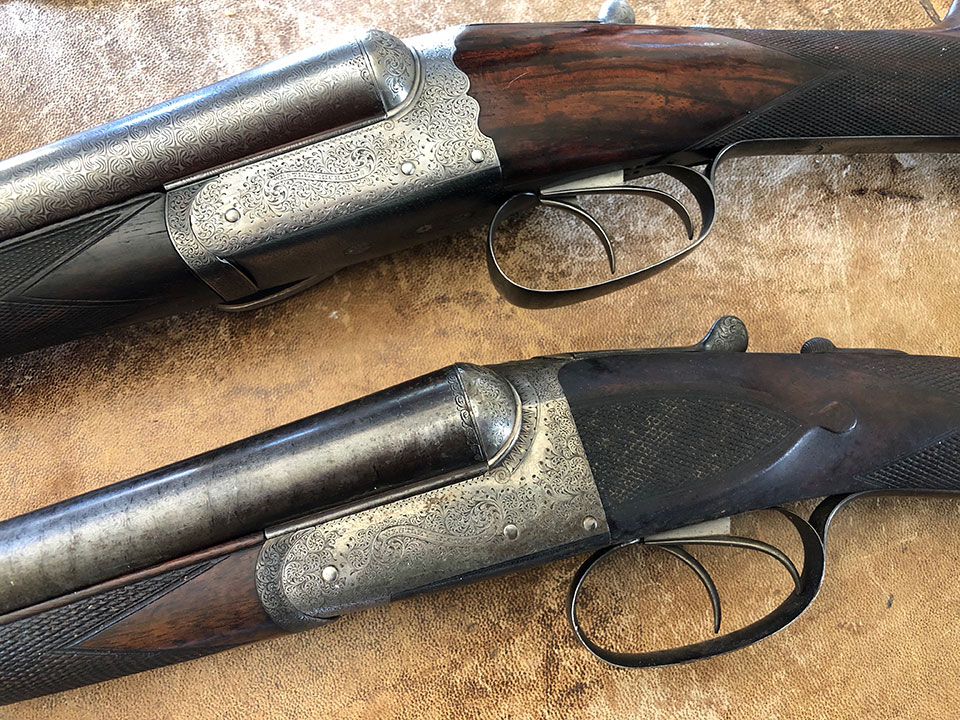
The first gun, was built in 1882, seven years after Anson & Deeley patented their famous action, which was developed in the Westley Richards factory at Bournbrook (now demolished). It can claim to be the first really successful hammerless gun.
The A&D has been built in huge numbers by makers from Birmingham, to London, to Liege, Eibar, Brescia and anywhere else you care to name which has had a gun factory. Bournbrook is where it started life, in 1875.
This earlier gun has the original bolting system, consisting of the Westley Richards patent top-lever and sliding bolt, which engages with a slot cut into the ‘doll’s head’ rib extension to provide bolting of the barrels to the action.
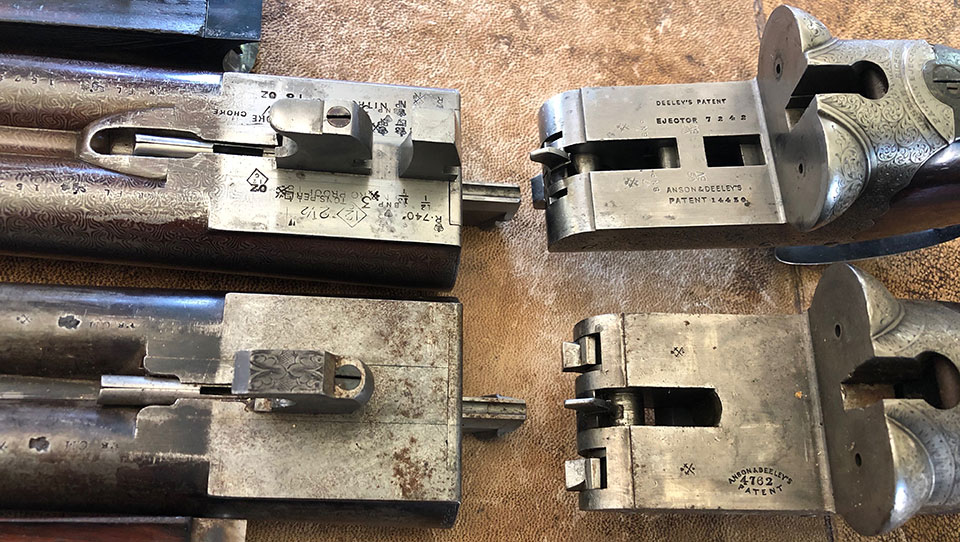
It looks flimsy and simple but it is effective. The single lump projects through the action bar and can be seen when the gun is upside down, between the bottom plate and the forend iron, perfectly fitted and engraved.
The second gun, built in 1896 combines the Westley Richards top-lever with the Purdey bolt, patented in 1863. By 1896 the patent rights to this had already run their course and it was free to be used by anyone. The Scott spindle, used to link the two, patented in 1865, was also out of patent protection. Universally considered the best lock-up for a shotgun, Purdey’s bolt was adopted by everybody, though the Birmingham affection for a third grip remained strong and many Westley Richards models adopted this ’belt and braces’ approach to the locking mechanism.
The lumps (for there are now two) do not project through the action, they are fully concealed by the bottom plate. The convention at this time for better quality guns was to do this, leaving ‘through lumps’ to the lower quality gun. This is why it is important to recognise age as well as quality in guns you are appraising. Through lumps may be an indication of lower quality or they may simply be an indication of age, before the convention was adopted.
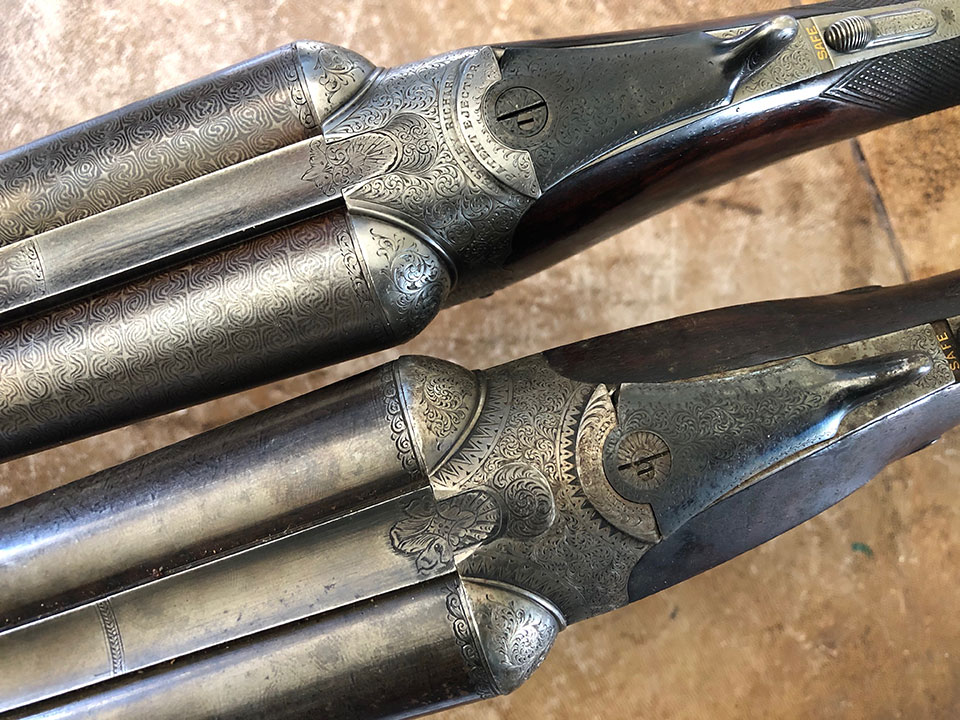
The older gun is wider in the body, 1 3/4” across the bar and 2 1/4” across the breech, while the newer gun is 1 1/2” across the bar and 2 1/4” across the breech.
The older gun has a straight-backed action, with ‘church window’ chequered panels and drop points, while the newer one has a ‘fancy back’, with the metal filed into a bow shape, where it joins the wood. The chequer layouts on the hand and forend are the same.
Engraving has changed little between the guns. ‘Westley Richards’ is signed in a scroll banner in the middle of the action. The rest of the action and metal parts are covered in fine scroll engraving. That on the older gun is finer and certainly crisper now, as the gun has seen less use.
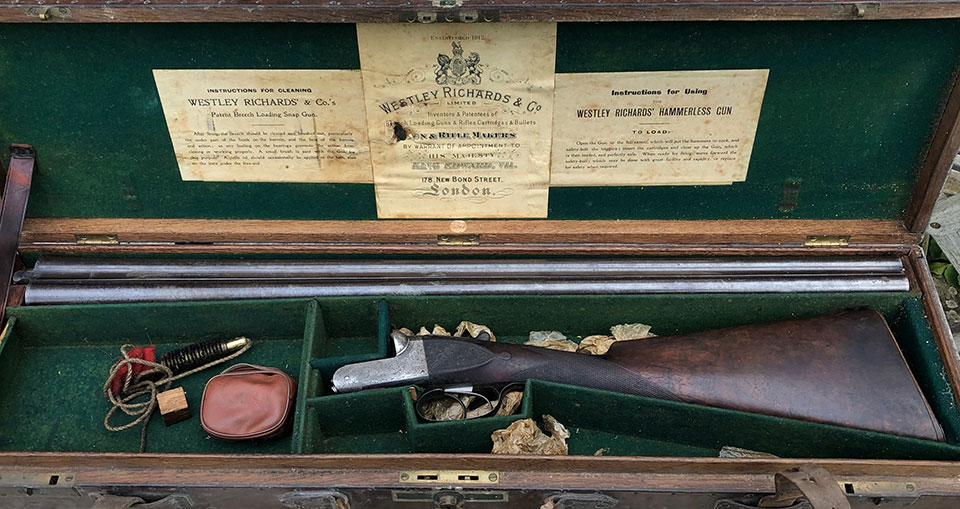
Both guns have Damascus barrels showing fine figure and both ribs are engraved ‘New Bond Street, London’, where Westley Richards had a shop. They also share well-figured French walnut straight-hand stocks. The forends are fitted with the Deeley & Edge patent forend catch (another Westley Richards originated design) and have horn finials. The younger gun has its forward section tapered more acutely.
Both guns are ejectors, with Deeley patent box ejector work in the forends. On the newer gun, this is completely normal, as the Deeley (John Deeley was the son of the Westley Richards chairman) was the preferred ejector used by the firm. However, its appearance on the older gun is puzzling, since it was not patented until 1884 (patent 14526).
Another difference is the cocking arrangement. The 1882 gun has large, twin cocking dogs protruding from the bar. The 1896 gun has a single cocking dog, which spits into a ‘Y’ shaped limb inside the action body to cock both locks.
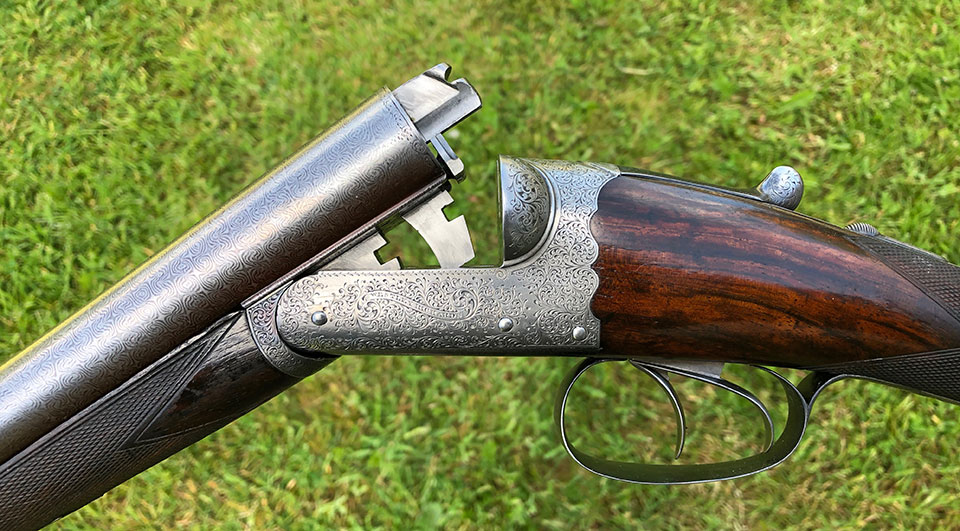
These gradual refinements of the Anson & Deeley gun at Westley Richards lead it from its origins as a novel hammerless gun to a slimmer, lighter, more modern game gun in small increments. The older gun weighs 6lbs 13oz, while the newer on is a racy 6lbs 8oz.
I have to say, I prefer the older gun!
Published by Vintage Guns Ltd on (modified )




